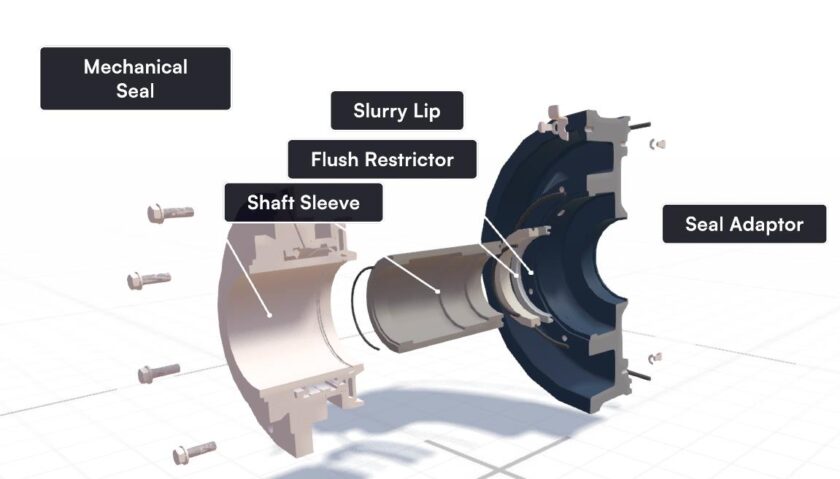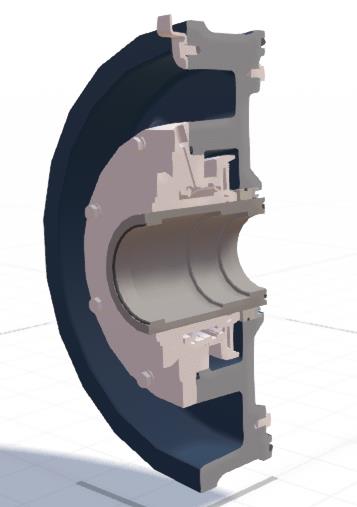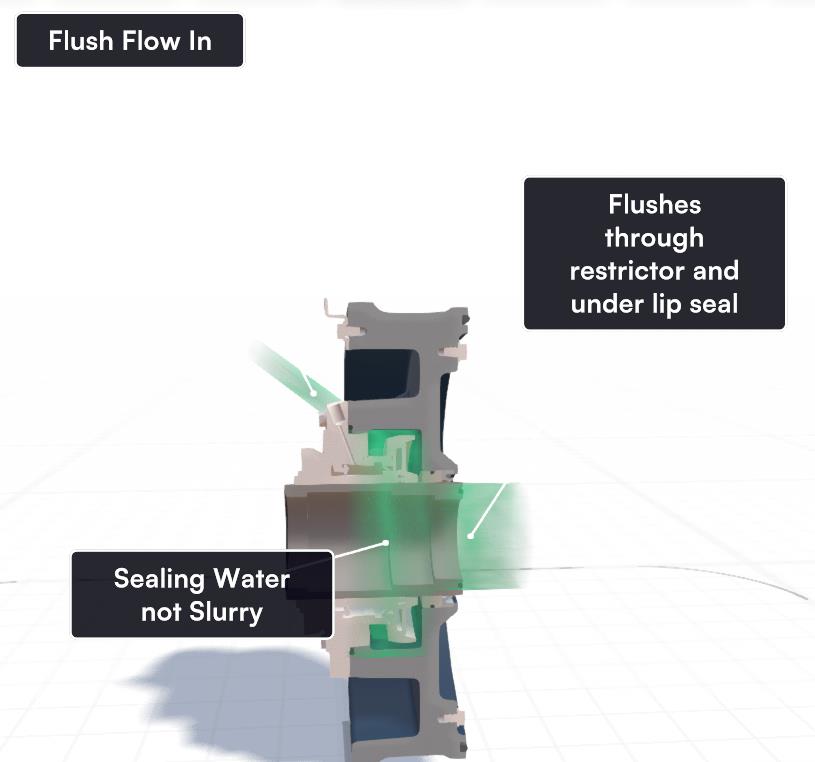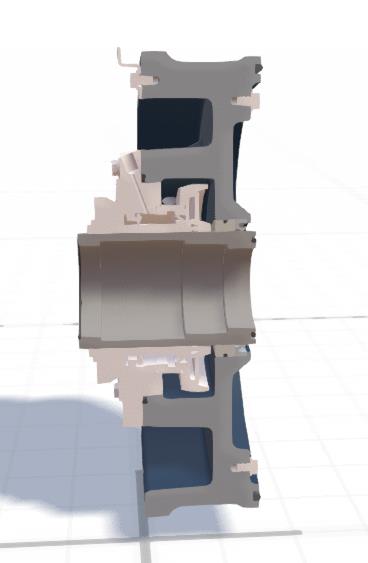To get the most out of your severe duty cartridge seals, we recommend using standard impellers with expelling vanes, which reduces seal chamber pressure and alleviates load on the seal and thrust bearing.
In scenarios where slurry dilution is problematic or flush water is unavailable, traditional unflushed seals or costly double seals may be necessary.
This augmented reality view presents the arrangement used to maximise the life of severe duty cartridge slurry seals.
To view in full screen mode, press the icon on the bottom RHS toolbar. For full immersion, we recommend using your Smart Phone or Tablet to view in Augmented Reality.
Configuration for Leak-Free Mechanical Shaft Seals
When utilising external flush, only the components shown are necessary to achieve a leak-free mechanical shaft seal. The same mechanical seal can operate in an unflushed configuration with special impeller and frame plate liner inserts.
Flush water allows the slurry’s characteristics to be irrelevant as water not slurry is being sealed. Using external flush water cools the seal, enhancing reliability akin to that of mechanical seals in water pumps.

If the seal is not flushed, the slurry characteristics must be carefully reviewed as the slurry rather than water is now cooling the seal faces. A Maric constant flow valve is recommended to control flush flow, utilizing only 30% of the flow compared to full-flush packed units, significantly extending seal life.
A Maric constant flow valve is recommended to control flush flow, utilizing only 30% of the flow compared to full-flush packed units, significantly extending seal life.

How Flush Water Improves Reliability
With flush water at a higher pressure than the slurry, the seal remains unaffected by the slurry when operational. The flush water flow is restricted by a bush, with the water velocity under the bush preventing solids entering the seal chamber.
The severe duty slurry lip seal does not contact the sleeve when flush water is present, minimising wear. When the pump and flush water is turned off, the lip closes keeping the seal immersed in water. Doing so maintains operational integrity even in high solids scenarios.

Alternatives When Flush Water Is Not Available
In cases where slurry dilution is undesirable or flush water is unavailable, the standard tapered seal adaptor option with special impellers and frame plate liner insert designs is required.
This configuration relies on slurry to cool the single mechanical seal faces. It should be considered that all mechanical seals use faces machined to a few light bands’ flatness. Overtime, direct contact with slurry will damage the seal. As such the trade off to get rid of rather than reduce the flushwater is reduced mechanical seal reliability.
For unflushed seals in heavy slurries, consider a double seal and barrier system to optimise reliability.

We trust this quick review of the various seal arrangements available was useful. If you have any questions, or suggestions, please feel free to get in touch with our team.